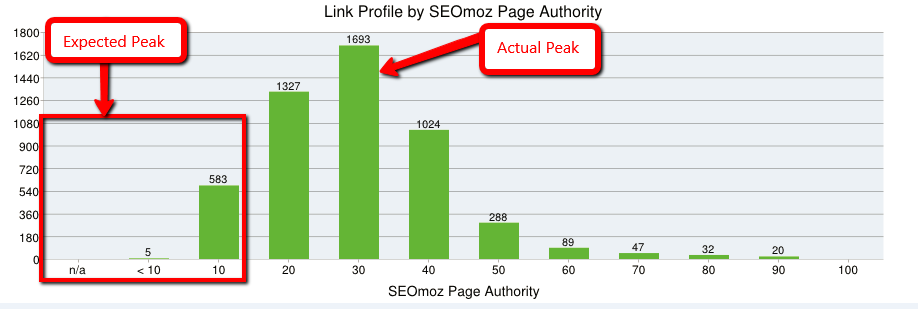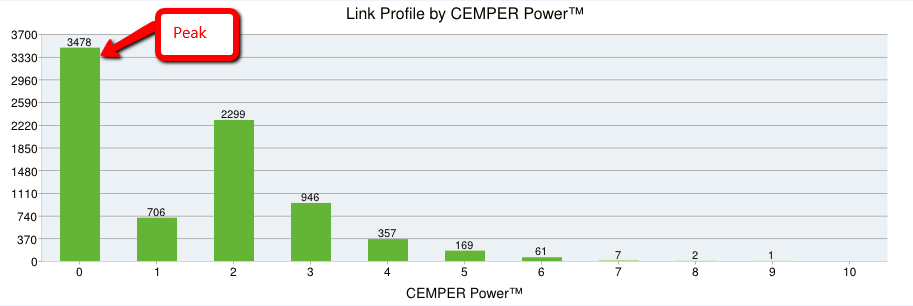We are big fans of Link Research Tools (LRT) at Salience and regularly use it to deliver high-level insight for our SEO campaigns.
Over the last few years, we have seen the tool develop along with their own Cemper metrics. Due to the subjective nature of SEO, it is difficult to rely on any one metric and as such we have always assessed any link partners by a wide range of metrics, including:
Google PageRank
Google’s form of website ranking, which has become outdated in recent years and less reliable for SEOs. However, it is still useful for identifying penalised sites.
Moz Rank (Page & Domain Authority)
A former powerhouse, which a lot of SEOs still rely on as it gave a much more insightful look into a website’s authority than PageRank did. However, personally, I have found that over recent years the database has become less reliable and the data is less actionable. I will elaborate further on this later.
Majestic Citation/Trust Flow
A new set of metrics brought in to replace the outdated AC rank. These offered to use Majestic’s huge database and present a new idea of link analysis that helps identify when a site not only has a huge/powerful link profile themselves but also what level of trust that site has. This helps avoid spam sites that can be shown up as powerful in other metrics due to huge amounts of spam link building. I have found these quite useful and more accurate in most cases than Moz.
Cemper Metrics (Power, Trust, Power*Trust)
Building on its database and insight from the range of tools available in the LRT suite, Cemper developed 3 metrics. The first, POWER, is most comparative to Majestic Citation flow and PageRank in my opinion and looks at the volume and power of the links to a site. The second, TRUST, is most comparative to Majestic Trust Flow in that both look at the implied level of trust that a site has placed on the types of sites that link to it. Finally, POWER*TRUST is what O think gives Cemper metrics the edge as I do not feel that there is another metric that compares to it. This gives a quick evaluation which determines the quality of a site based on the previous two metrics. You can read more about how these are calculated here.
You can probably see from my evaluation which set of metrics I believe offers a more insightful and actionable analysis of linking domains but let me explain further.
Observations
**It’s worth noting that the findings below were in no way intended as a test and as such not put together to follow test conditions. However, they are observations I noted during my normal SEO activities.
I recently put together a manual disavow file for a client that had a lot of spammy link building. Most of the sites in the profile were un-indexed and low-quality sites. Some were links on good domains but against Google guidelines and therefore had to be removed along with other exceptions. After I had compiled my disavow file, I then ran some analysis on it to see the Moz, PR and Cemper metrics results for the file I put together.
Now, the expected result would be that the majority of the links would be at the lower end of each metric’s scale, with a proportion of exceptions for removals from good quality sites that I deemed against guidelines and the fact that no tool will match a human eye.
Moz Page Authority
We can see below that Moz did not perform near the expected result with the majority of links hitting the Mid-Low tier of their scale

Moz Domain Authority
Now, this is a lot closer to what we would expect, but there are still a lot of links higher than the bottom end of the scale which is where I would expect spam to be.

Google PageRank
Surprisingly this is a lot closer to the result we were expecting and in my opinion, offers a better view of the profile than the Moz Metrics (which I never thought I would ever say).

Cemper Power
This is very similar to the PageRank graph, which is what you would expect from a metric that asses the amount and power of links to the sites.

Cemper Trust
This is probably the closest to the expected result out of any of the graphs. Essentially we have analysed a list of sites that we would not deem worthy of being in our link profile, so seeing the peak at the lowest end of the scale is exactly what an SEO in my position wants from these metrics.

Cemper Power*Trust
Now the combination of the two Cemper metrics into Power*Trust gives a very similar graphical representation to the above Trust metric, which I have already declared is the most useful and accurate in my opinion. This shows that the consolidated metric still weighs heavily in the areas I would expect and is not overly influenced by Power.

Majestic vs Cemper
It is clear from the above that Majestic metrics are missing from this particular piece of work. My team and I have always found Majestic fairly good at classifying sites but with our heavy involvement with LRT and their API to fuel our internal tools, we decided to see if we can rely on LRT alone, as the two offer similar preferable ways of looking at site classification. Also, Power*Trust adds a little extra firepower to the arsenal, allowing us to take both Power/Citation and Trust into consideration quickly.
So, to prove that they are both singing from the same hymn sheet, and we were not showing blind faith in one tool I did a quick piece of analysis.
I had an excel sheet of 376 URLs to hand, so I collected the 4 metrics on each URL excluding Power*Trust as Majestic don’t have a comparable one. Majestic works on a scale of 1-100 and Cemper 1-10, so I divided the Majestic 100 scale by 10 and rounded it to its nearest number. This meant I could compare them all directly.
Cemper Power vs Majestic Citation
173 direct matches
Only 1.35% difference in the sum total of the scores
and 0.04% variance
Cemper Trust vs Majestic Trust Flow
254 direct matches
Only 4.42% difference in the sum total of the scores
and 0.09% Variance
The results are surprisingly similar which has given me confidence in the two metrics.
Conclusion
From my work with these metrics, I have shown why I use Cemper metrics as an effective SEO tool. The results show how they not only offer more insightful analysis than their main competitors but fall closer to a manual link inspection, allowing quicker answers to those important SEO questions; “what do I remove/disavow?”, “what is worth keeping?” and “do I form a relationship with this site?”.
Obviously, these and the metrics above are not the only things we look at in our link analysis but in terms of core SEO metrics, this is where we would begin.
Read more about our SEO approach.
